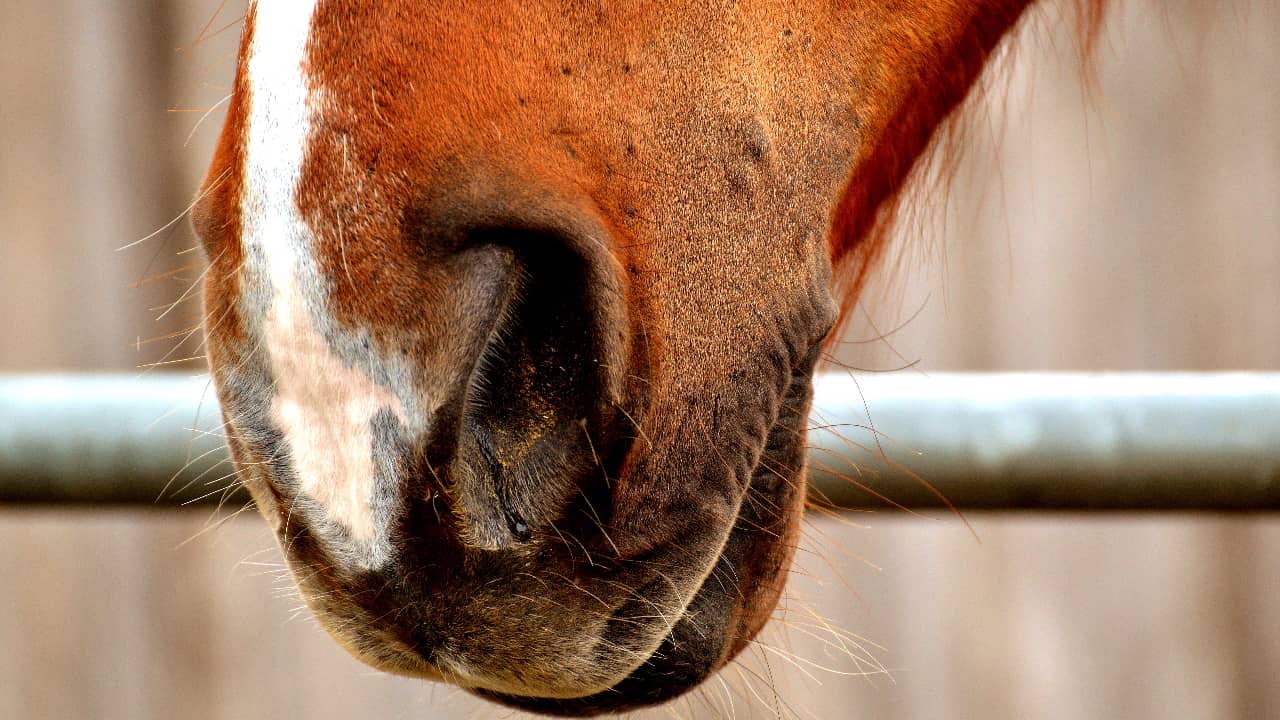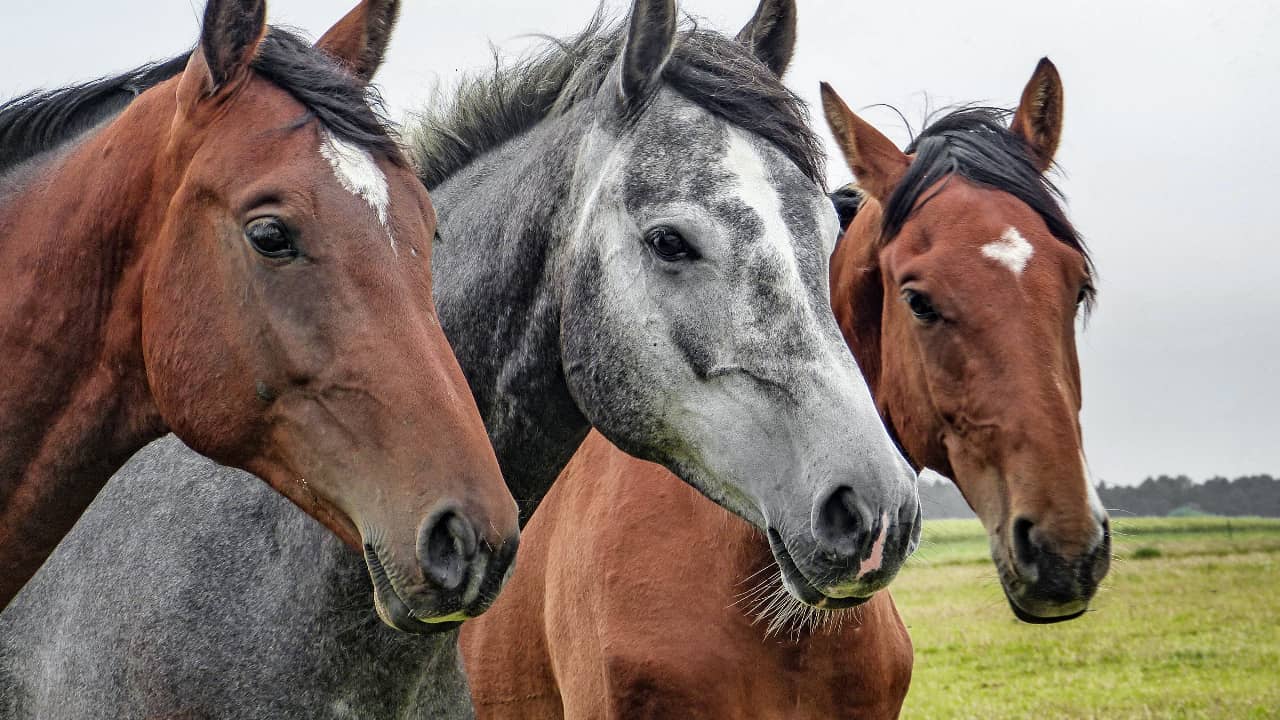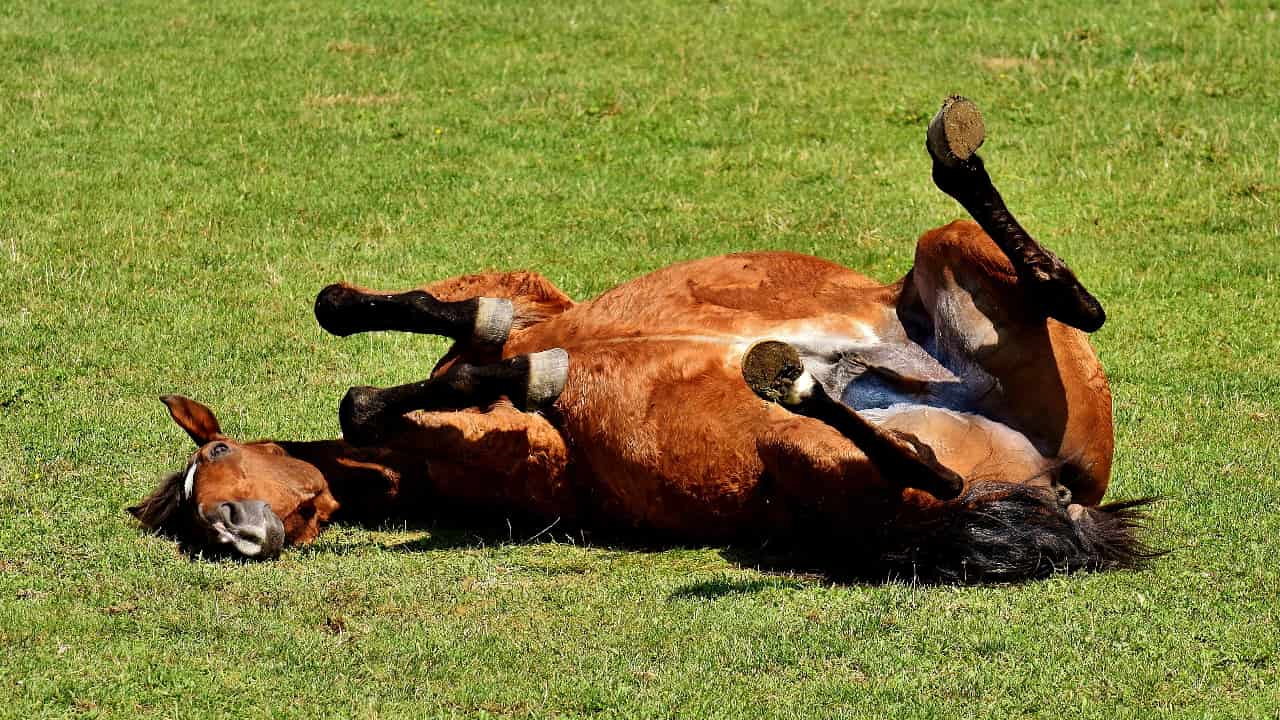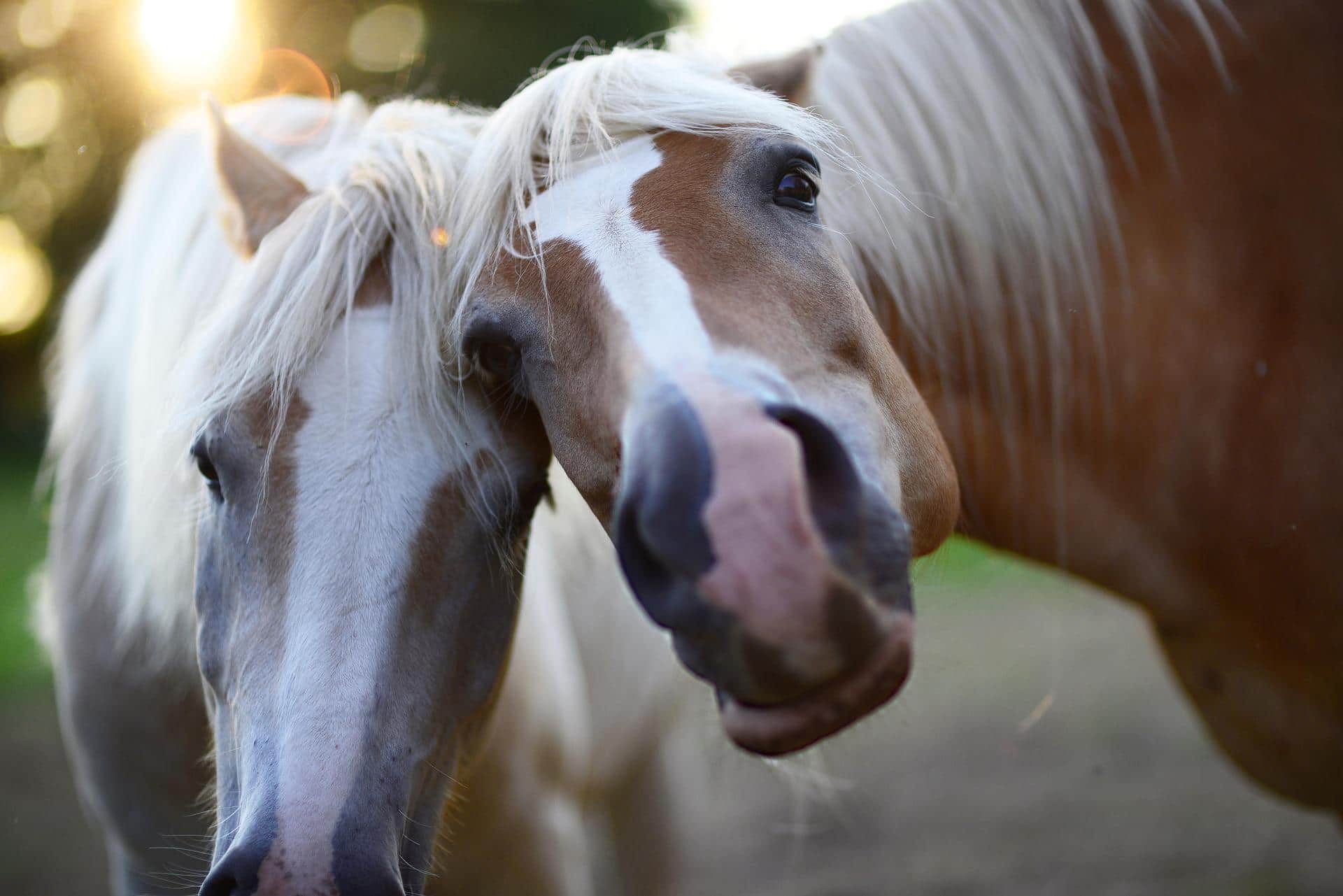Whether it’s a horse or a human, nose bleeds can be quite the scare. Often dramatized in films and media as a serious medical emergency, seeing a nose bleed in person can definitely put you in a panic. That’s especially true when you see it happen to your beloved horse.
If there’s anything you need to know about horses, it’s that they experience nose bleeds quite often. And although horse nose bleeds appear quite shocking and dramatic, there’s rarely ever any reason to take your horse to a vet for a bloody nose.
What is Epistaxis?
The medical term ‘epistaxis’ essentially means ‘nose bleeding’. During a nose bleed, blood flows out from either one or both of the nostrils. It also doesn’t really matter how much blood comes out to be qualified as equine epistaxis. That means whether it’s a few drops or a gushing flow of blood, it still falls into the nose bleed category.
There’s also no time limit as to how long a nose bleed can last. In some cases, nose bleeds in horses can last a few seconds up to fifteen minutes or even more, depending on the factors surrounding the situation.
The Symptoms of Nose Bleeds in Horses
It’s not really that hard to identify if and when your horse is experiencing epistaxis. A quick look at their nose should provide you all the information you need. Nose bleeds tend to be particularly vibrant in color, but some horses can bleed different shades of red.
But just to be clear, a horse nose bleed can:
- Come from one nostril or both nostrils
- Appear in a variety of shades of red
- Last for a few seconds or several minutes
Assessing your horse’s nose bleeds should tell you more about the cause. Most minor nose bleeds in horses won’t call for much more than a few home remedies. But in some cases, it might be necessary to call a veterinarian immediately.
What Causes Nose Bleeds in Horses
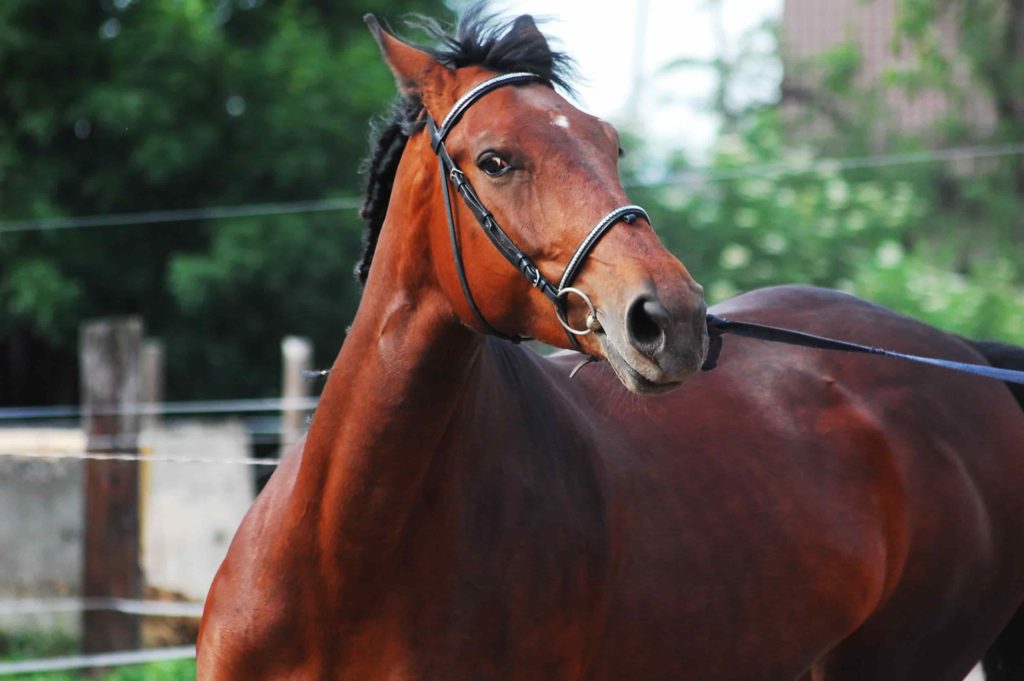
There are a handful of reasons as to why a horse might suddenly develop a nose bleed. In most cases, you can let the situation slide without having to do much else. But if you suspect an underlying issue, you shouldn’t hesitate to take your horse on a trip to the vet.
Generally speaking, nose bleeds in horses happen as a result of injury or irritation to the nasal passages, the throat, the lower airways, or the lungs. So it could be something as simple as minor head trauma, or as major as a tumor somewhere in the horse’s chest or head.
Irritation to the Nasal Passages
Just like humans, horses get itchy – it’s just a fact of life. Sometimes, a horse’s nostrils will develop an itch, and they’ll try to scratch it to the best of their ability. The problem however is that horses can only do so much to relieve an itch. So they’ll end up rubbing their nose against bushes, bags of hay, and whatever they have within reach to get rid of the irritation.
Over-scratching an itchy nose ultimately leads to nose bleeds. But you can’t expect more than just a trickle of blood. In most cases, the bleeding should stop within a few seconds.
Another way that the nasal passages may become subject to bleed-worthy irritation is if your horse gets a stomach tube inserted through one of the nasal cavities. Horses undergoing treatment for a variety of conditions may need a stomach tube to feed while they’re recovering.
Because the tissues lining the nasal cavity can be quite thin and delicate, even the slightest misdirection of the tube’s front end could scratch the tissue and cause minor injury and bleeding. Again though, this doesn’t last very long.
Foreign Object in the Nose
Have you ever taken the time to look at a horse’s nostrils? Those things are huge. And with significant diameter, any number of things can fit through and get lodged inside.
If a foreign body gets stuck inside your animal’s nose, then you can expect that they might also start to show other symptoms aside from blood coming out of its nose. They may cough as a cause of irritation. They might also sneeze quite often as their body tries to get rid of the foreign bodies.
Moderate bleeding may occur, since the soft inner lining of the nasal passage gets constantly roughed up by the presence of the object.
Exercise Induced Pulmonary Haemorrhage
Equine experts don’t recognize exercise-induced pulmonary hemorrhage as a ‘true nose bleed’ because the blood doesn’t come from the nasal structures, but simply exits through it. In these cases, the animal may be subject to excessive, demanding, strenuous exercise and activity, like racing or farm work.
When they’re overworked, the lungs start internal bleeding. This results to a blood-tinged discharge trickling out of the nostril. Typically, exercise-induced pulmonary hemorrhage involves not just one nostril, but both.
Progressive Ethmoid Hematomas
Considered a benign form of tumor, an ethmoid hematoma is essentially a collection of a proliferation of blood vessels. Called a ‘bleeding polyp’, these grow partially in the airways and partially in the nasal passage.
As a more serious cause of nose bleeds in horses, progressive ethmoid hematomas may cause significant blood loss. Seeking the treatment and expertise of a veterinary surgery specialist as soon as possible can prevent further complications.
Guttural Pouch Mycosis
Inside the horse’s head are two unique structures called the guttural pouches. Equine specialists speculate that these pouches perform a number of functions, including balancing air pressure, warming inhaled ambient air, and even serving as a resonating chamber for vocalization.
Fungal infection of one guttural pouch or both can destroy the small blood vessels that pass along the exterior of the pouch like the internal carotid artery. In turn, the erosion causes an aneurysm to form around the guttural pouches. The sad part is that as the ballooning vessel continues to grow, the horse will show zero symptoms.
However once it reaches terminal size, the aneurysm may explode, causing severe bleeding through the nose and mouth. Horses lose a significant amount of blood when this happens.
Guttural pouch mycosis is the most common cause of recurring nose bleeds in horses and can be fatal. Because of its delicate nature, this condition requires prompt treatment, surgery, and immediate medical management.
Tumor
In rare cases, a tumor somewhere in the respiratory tract may cause your horse’s nose to bleed. If you encounter recurrent bleeding from the nose without any confirmation that your horse suffers from the fungal infection described above, then you may want to get other imaging tests done.
X rays can help your veterinarian identify any dangerous growths in your horse’s lungs and body that might explain their bleeding.
How Do You Diagnose Nose Bleeds in Horses?
As a horse owner, it’s important that you take your steed to the vet immediately at the first sign of a nose bleed. Unless there was an obvious reason for the bleed – like a minor bump to the head – and the fiasco ended quickly enough without any apparent, lasting complications in your animal, a trip to the vet is always a necessity.
The vast majority of veterinarians use a number of different tests to identify the cause of the bleed, but they often start with an external examination. If nothing comes up to identify the cause of the bleed, they’ll turn to imaging tests that let them see inside the head, neck, and even chest of your animal. These include:
- Endoscopic examination
- X-rays
- Skull radiography
- CT scans
- MRI scans
By getting a clear picture of what’s happening inside your horse, your vet should be able to prescribe the proper treatment and identify whether your situation requires surgery.
Treatment for Nose Bleeds in Horses
On the off chance that your horse hit their head or that they scratched their nose a little too much, you can treat the nose bleed at home.
- Keep the horse calm and avoid any sudden movements and loud noises.
- Place an ice pack right under the horse’s eyes. If there’s damage to the nasal passages, the cooling effect should stop the bleeding.
- Check the time. A minor nose bleed shouldn’t last for more than 15 minutes.
Horses carry a lot of blood inside their massive bodies. So what might look like a lot of blood to you, might not actually count as that much in proportion to your animal. Do not pack your horse’s nose with cotton or cloth to soak up the bleeding. These animals can’t breathe through their mouths, and may suffocate or inhale the material and cause further complications.
Nevertheless, if your horse is bleeding profusely for more than 15 minutes, or if they get nose bleeds frequently, consult a qualified veterinarian.
Recovery and Prevention
No horse owner wants to see their beloved animal bleeding from its nostrils. So after a bleed, you might want to consider these tips to keep the dramatic experience from happening again.
- Avoid strenuous, physical activity for a few days or weeks after the bleed
- Use a cold compress beneath the eyes to soothe and calm the blood vessels
- Prevent any trauma to the animal’s face
- Ask your vet for medication or supplements to prevent infection and secondary sinusitis
- Clean the nostrils of residual blood to keep away pests and bacteria
- Inspect your horse’s pen for small objects that could get lodged in the nostril as foreign bodies
- Schedule your animal for a routine vet check-up to detect potential issues before they progress
- Keep an eye out for any other signs and symptoms that might be related to the nose bleed
Frequently Asked Questions
Is a horse nose bleed serious?
That depends on the bleeding and its root cause. Did it happen as a result of obvious trauma or irritation, or was it sudden and without apparent cause?
If your horse bleeds for more than 15 minutes and you measure a significant amount of blood lost, then you might be looking at a more dangerous situation. Other changes like distress and signs of discomfort might also indicate a serious threat to your horse’s health.
The More You Know
Horse nose bleeds can cause serious panic and worry in a loving horse owner, but acting with tact at the first signs of trouble can protect your trusty steed from a world’s worth of complications – and even death.
If you’re noticing problematic nose bleeds in your animals, seek appropriate treatment without delay to keep your four-legged friend safe against potential threats to its health.
